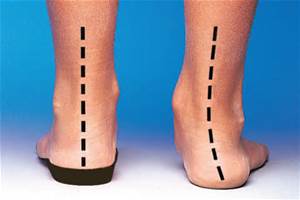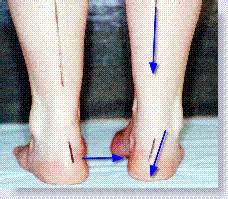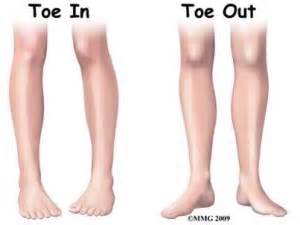By Jeffery D Regan LPT RTR, Director of Physical Therapy OAM
No matter what type of sport you do, for most of us the foot and ankle play a major part in our ability to participate. Over the years, much has been made of buzz words like supination , pronation, inverter, everter, toe in, toe out, forefoot striker, heel striker etc.. Honestly, it’s a lot to take in, but I’m hopeful I can make some sense of not only the terms, but also the bio-mechanics of the foot, in this blog.
 First, pronation in the foot is actually a combination movement. It involves both eversion of the heel (a position where the heel moves outward) and abduction of the forefoot (a position where the front part of the foot points outward or away from the body). This is actually an unlocking of the foot and ankle which allows the foot to become loose and the medial arch to drop. Pronation is actually a natural mechanism that the body uses to adjust to the surface you are walking or running on and acts as a way to absorb the shock of weight bearing . The problem with pronation occurs when there is too much of a good thing. Over the years of doing many runner evaluations, the amount of what I would call “normal” pronation is about 15 degrees measured at mid-stance of gait phase. The angle is measured in how the heel is positioned in relationship to the calf. Angles that are greater than 15 degrees start to place increased loads along the longitudinal arch, posterior tibial tendons, peroneal tendons, the joint of the big toe or hallux and the ligaments of tarsals and meta tarsals of the forefoot. If left unsupported, the athlete can start to have problems such as: plantar fasciitis, hallux valgus or bunions, re-occurring tendonitis of the posterior tibial, peroneal, and achillies tendons. The problem can also go as far as interfering with the alignment of the knee and the kneecap, as well as hips.
First, pronation in the foot is actually a combination movement. It involves both eversion of the heel (a position where the heel moves outward) and abduction of the forefoot (a position where the front part of the foot points outward or away from the body). This is actually an unlocking of the foot and ankle which allows the foot to become loose and the medial arch to drop. Pronation is actually a natural mechanism that the body uses to adjust to the surface you are walking or running on and acts as a way to absorb the shock of weight bearing . The problem with pronation occurs when there is too much of a good thing. Over the years of doing many runner evaluations, the amount of what I would call “normal” pronation is about 15 degrees measured at mid-stance of gait phase. The angle is measured in how the heel is positioned in relationship to the calf. Angles that are greater than 15 degrees start to place increased loads along the longitudinal arch, posterior tibial tendons, peroneal tendons, the joint of the big toe or hallux and the ligaments of tarsals and meta tarsals of the forefoot. If left unsupported, the athlete can start to have problems such as: plantar fasciitis, hallux valgus or bunions, re-occurring tendonitis of the posterior tibial, peroneal, and achillies tendons. The problem can also go as far as interfering with the alignment of the knee and the kneecap, as well as hips.
Shoe manufacturers try to slow down or help support the athlete with varying degrees of extra support built into a shoe, calling it a “motion control shoe.” These shoes have materials like deep heel seats, hardened plastic heel cups, built up medial arch support, and a harder material as the last or the bottom part of the shoe. All of these things are done to slow down or control the amount of heel eversion and the drop of the medial longitudinal arch. Studies show that a runner with a mid-stance of gait will place 3-5X body weight through the arch of the foot. In other words, for a 200 pound man that is up to 1000 pounds of force that your arch, soft tissues, ligaments/ tendons and muscles have to overcome. In the gait cycle, pronation occurs shortly after heel strike when the runner or walker rolls weight from the outside of the posterior portion of the heel to the inner portion of the heel, thus moving to a everted position and allowing pronation to occur. Therefore, the heel is the key… control the heel and you can control some pronation.
 In contrast, supination is also a combination of events, but the heel is inverted and the forefoot adducts or comes closer to the body. While pronation was a relaxation of the foot, supination is a locking of the forefoot allowing it to become more rigid. This rigidity is used at the heel strike phase of gait and heel off position so that the large muscle groups of the lower leg, such as the calf, can be efficient in its application of force to propel the body forward. Think of it this way; is it easier to apply force through a metal bar or a piece of rubber?…..obviously the metal bar. The metal bar uses all of the force that you apply to it, to do work with minimal energy loss. Therefore you are efficient. At push off the forefoot acts as a rigid lever to use all of the energy that the lower extremity is applying to the foot to propel you forward. The more efficient you are as a supinator the less energy loss you will have. Once again too much of a good thing can be a bad thing , with a more rigid foot , you are less likely to be able to disburse the force of running or walking and thus transfer ground reactionary forces to your lower leg . For example, the 1000 pounds of force that we talked about above at the mid-stance of gait, if not dispersed in pronation, proper shoes or soft tissues, the energy is absorbed into the bone. This is why forefoot strikers have higher incidents of lower leg stress fractures in runners. Runners or walkers who have a supinated foot typically want shoes to train in that are more accommodating, rather than a motion control or stiff shoe.
In contrast, supination is also a combination of events, but the heel is inverted and the forefoot adducts or comes closer to the body. While pronation was a relaxation of the foot, supination is a locking of the forefoot allowing it to become more rigid. This rigidity is used at the heel strike phase of gait and heel off position so that the large muscle groups of the lower leg, such as the calf, can be efficient in its application of force to propel the body forward. Think of it this way; is it easier to apply force through a metal bar or a piece of rubber?…..obviously the metal bar. The metal bar uses all of the force that you apply to it, to do work with minimal energy loss. Therefore you are efficient. At push off the forefoot acts as a rigid lever to use all of the energy that the lower extremity is applying to the foot to propel you forward. The more efficient you are as a supinator the less energy loss you will have. Once again too much of a good thing can be a bad thing , with a more rigid foot , you are less likely to be able to disburse the force of running or walking and thus transfer ground reactionary forces to your lower leg . For example, the 1000 pounds of force that we talked about above at the mid-stance of gait, if not dispersed in pronation, proper shoes or soft tissues, the energy is absorbed into the bone. This is why forefoot strikers have higher incidents of lower leg stress fractures in runners. Runners or walkers who have a supinated foot typically want shoes to train in that are more accommodating, rather than a motion control or stiff shoe.
 Toe in or toe out are two terms that are rather simple in that the normal walking or running position of the foot is approx 10 degrees of outward rotation of the foot. This allows a person to roll over the top of the ankle while placing a large amount of their weight through the inner or medial portion of the foot. This also allows us to extend the big toe and push off using the larger muscles of our foot and ankle. Tight calf, lack of big toe extension, excessive pronation, excessive supination, long second toe , and congenital hip alignment are all internal problems that can and will lead to the foot changing its normal alignment. For example, a person who has tight calves and doesn’t have the needed 10 degrees of easy dorsiflexion (the ability of the foot and ankle to move backward so that the foot is closer to you lower leg) will turn the foot slightly outward (toeing out) so that it is easier to roll over the foot. The problem is that now this individual will roll over the inner portion of the arch and the big toe, lose muscle efficiency, and place increased stress on the plantar fascia and big toe. This increase in stress will eventually lead to soft tissue stress and a breakdown of the foot, ankle, or lower extremity.
Toe in or toe out are two terms that are rather simple in that the normal walking or running position of the foot is approx 10 degrees of outward rotation of the foot. This allows a person to roll over the top of the ankle while placing a large amount of their weight through the inner or medial portion of the foot. This also allows us to extend the big toe and push off using the larger muscles of our foot and ankle. Tight calf, lack of big toe extension, excessive pronation, excessive supination, long second toe , and congenital hip alignment are all internal problems that can and will lead to the foot changing its normal alignment. For example, a person who has tight calves and doesn’t have the needed 10 degrees of easy dorsiflexion (the ability of the foot and ankle to move backward so that the foot is closer to you lower leg) will turn the foot slightly outward (toeing out) so that it is easier to roll over the foot. The problem is that now this individual will roll over the inner portion of the arch and the big toe, lose muscle efficiency, and place increased stress on the plantar fascia and big toe. This increase in stress will eventually lead to soft tissue stress and a breakdown of the foot, ankle, or lower extremity.
The key with feet/ ankles is to know what type of anatomy you have and what style of runner you are. Once you know your style and your issues (if you have any) you can use shoes, exercise , stretching, strengthening and cross training to try to bring your foot, ankle and lower extremity closer to neutral. Not only will you be a more efficient athlete, but you’ll also have fewer injuries in the future.
Hockey season is almost here!
Jeff










